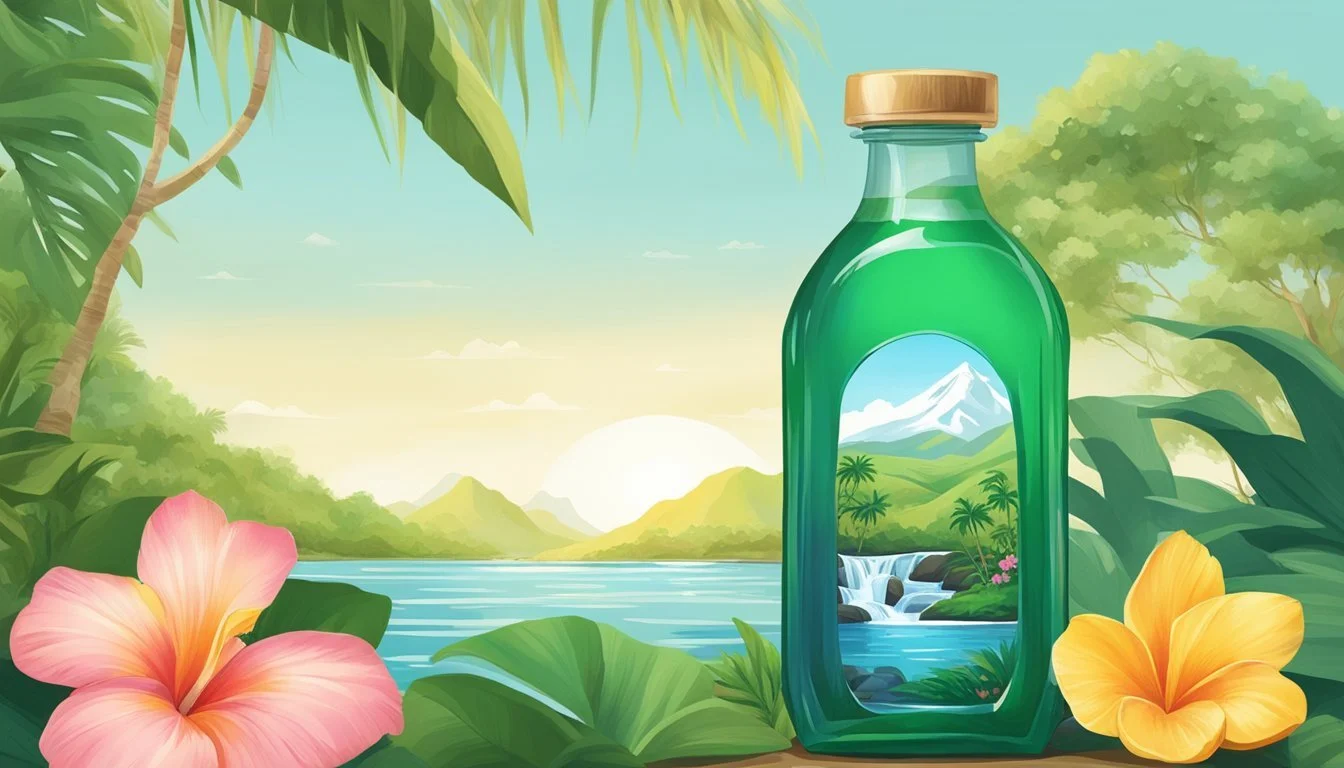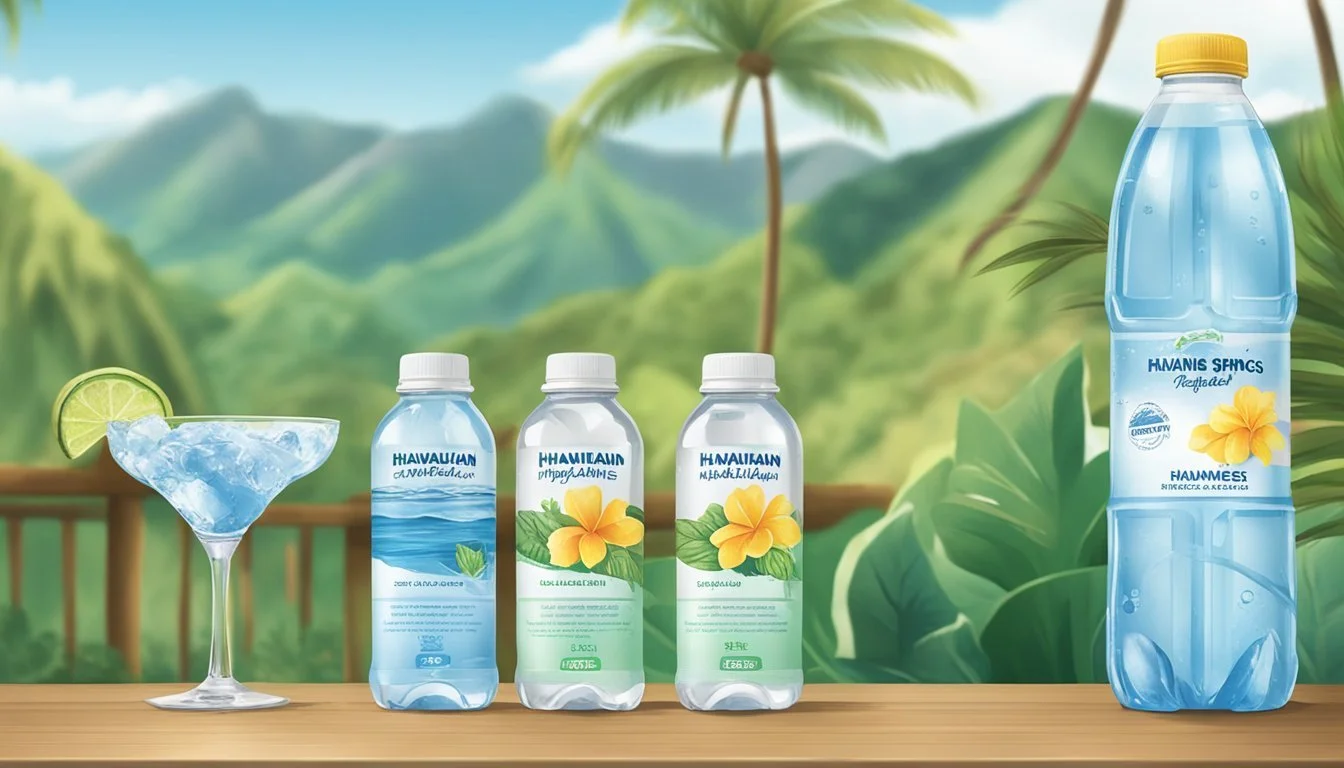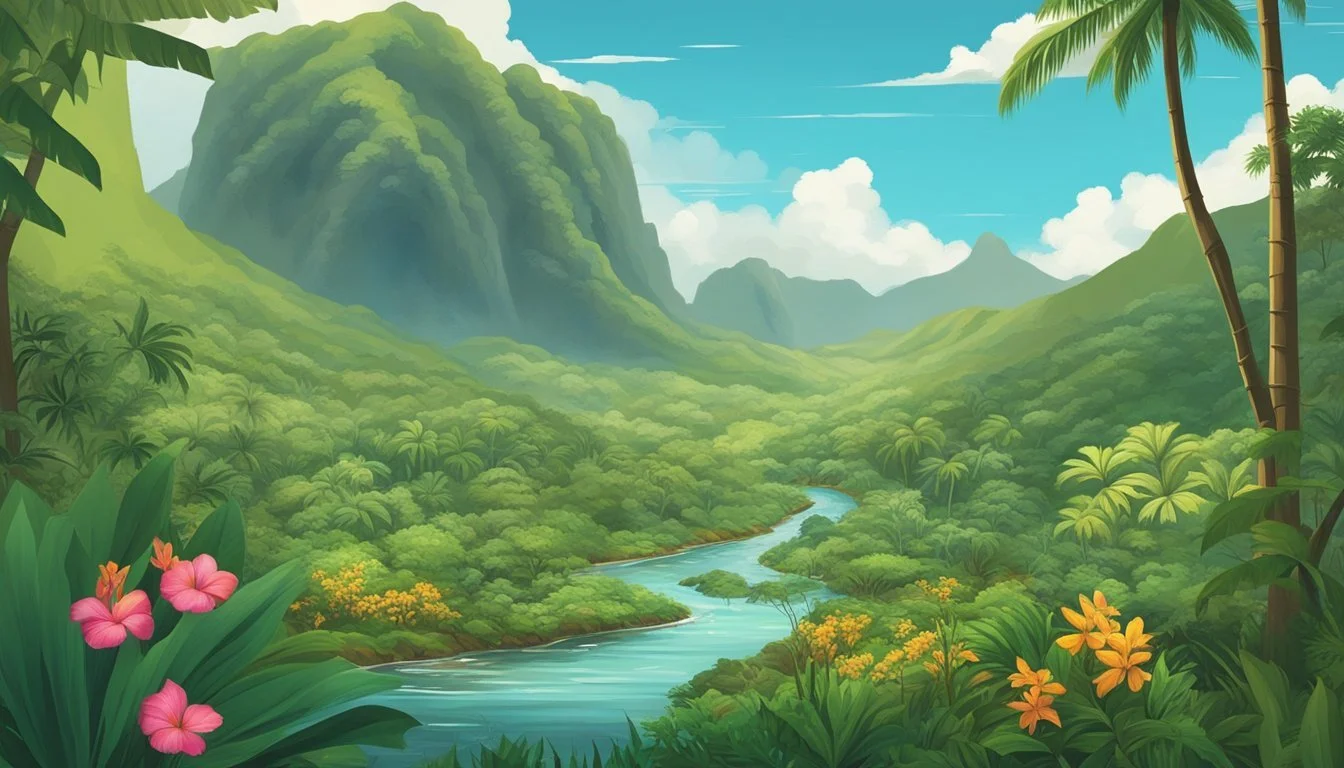Hawaiian Springs vs. Refreshe
Comparing Quality and Taste
Choosing the best bottled water can make a significant difference in your hydration routine, especially when considering brands like Hawaiian Springs and Refreshe. Hawaiian Springs is often celebrated for its pristine origin and the pure, refreshing taste that comes from Hawaii's volcanic filtration process. This natural filtration gives it a subtle sweetness and a distinct mineral content, making it a favorite among consumers seeking a premium hydration experience.
On the other hand, Refreshe provides a more accessible option, often found in many local supermarkets. It is processed to ensure a clean and neutral taste, catering to those who prioritize availability and affordability.
When comparing Hawaiian Springs and Refreshe, the choice ultimately depends on preference and priorities—the unique source and flavor profile of Hawaiian Springs versus the widespread availability and cost-effectiveness of Refreshe. By considering these factors, readers can make an informed decision on which bottled water brand aligns better with their lifestyle.
The Rise of Bottled Water
The bottled water industry has seen significant growth in recent years, driven by changing consumer preferences, concerns about water quality, and environmental challenges. This section delves into how these factors interplay and shape the bottled water market.
Consumer Trends and Preferences
Consumer preferences have shifted towards bottled water due to convenience and perceived purity. Brands like Hawaiian Springs and Refreshe capitalize on this trend by marketing their products as high-quality and refreshing. Convenience stands out as a core driver; busy lifestyles favor grab-and-go options over reusable bottles.
Advertising plays a crucial role. Companies often highlight their water’s source, emphasizing natural springs or purified processes to attract health-conscious consumers. On top of that, flavored and sparkling variants cater to those seeking variety.
Increased health awareness, together with declining soda consumption, further propels the demand for bottled water. Many consumers believe bottled water is safer and healthier than tap water, although this perception isn't always backed by scientific evidence.
Environmental Impact of Bottled Water
The environmental impact of bottled water is a subject of significant concern. Plastic waste from bottles contributes massively to pollution; millions of bottles end up in landfills and oceans annually. The production process itself consumes large amounts of fossil fuels, amplifying the product’s carbon footprint.
Water extraction for bottling purposes can lead to depletion of local water sources, affecting communities and ecosystems. This is particularly relevant in areas like Hawaii, where natural springs are sources for some bottled water brands.
Efforts to mitigate these impacts include using recycled materials, developing biodegradable bottles, and promoting reusable bottle usage. Some brands, like Hawaiian Springs, are exploring sustainable practices to reduce environmental footprints.
Health Concerns and Benefits
Health concerns about bottled water often center around contamination and labeling. Studies indicate that a significant proportion of bottled water is derived from municipal tap sources. This can sometimes mislead consumers about the product’s purity and origin.
Contaminants such as microplastics, chemicals from plastic bottles, and other pollutants have raised doubts about the health benefits of bottled water. Rigorous testing and transparent labeling can help alleviate these concerns.
Despite the challenges, bottled water offers hydration benefits, particularly in regions where tap water quality is questionable. Some brands enrich their products with minerals, adding health value. Nonetheless, consumers need to be mindful of the brand’s reputation and source when selecting bottled water.
Understanding Water Quality
Water quality impacts taste, health benefits, and consumer safety. Key factors like pH levels, mineral content, and purification processes play significant roles.
PH and Alkalinity in Water
PH levels indicate the acidity or alkalinity of water. Pure water has a pH of 7, which is neutral. Hawaiian Springs water is slightly alkaline with a pH of about 7.7, offering a crisp taste. In contrast, Refreshe water reports a pH level of 7.4.
Alkaline water proponents believe it can neutralize acid in the bloodstream. However, more research is needed. The pH levels and the mineral content contribute to the water's alkalinity, impacting its overall smoothness and mouthfeel.
Mineral Content and Health
Minerals in water such as calcium, magnesium, and potassium are vital to health. Hawaiian Springs water is enriched with naturally occurring electrolytes providing a refreshing balance. These minerals contribute to its clean and pure taste profile.
Refreshe water also lists its composition clearly but may have lower mineral content. A comprehensive mineral profile can enhance the taste and offer health benefits, such as supporting bone and heart health.
Contaminants and Purification Processes
Disinfection and purification processes ensure water safety. Hawaiian Springs and Refreshe use rigorous filtration methods. Hawaiian Springs uses natural filtration through volcanic rock, ensuring a clean and crisp product free from contaminants.
Refreshe adopts advanced filtration techniques, including reverse osmosis and UV light treatment. This multi-step process aims to remove any potential harmful impurities, ensuring the water remains safe and pure for consumption. Understanding these methods is crucial for selecting high-quality bottled water.
Hawaiian Springs vs. Refreshe
This section provides a detailed comparison between Hawaiian Springs and Refreshe bottled water brands. It covers their histories, tastes, packaging, and environmental impacts.
Brand Histories and Philosophies
Hawaiian Springs water originates from renewable aquifers on the Big Island of Hawaii. The company emphasizes purity, sustainability, and a commitment to environmental stewardship. It focuses on bottling directly at the source to preserve the natural quality and unique mineral content.
Refreshe is sourced and bottled by Safeway Inc. and emphasizes affordability and widespread availability. The brand’s philosophy centers on providing high-quality, artesian water with added electrolytes for health benefits. With a focus on delivering accessible hydration options, Refreshe ensures a consistent supply to meet everyday needs.
Comparing Tasting Notes
Hawaiian Springs water is characterized by its naturally alkaline pH of 7.7+, which contributes to a clean, smooth taste with subtle mineral notes. The water's origin from Hawaiian aquifers provides a slightly sweet, refreshing flavor, making it ideal for hydration and pairing with meals.
Refreshe water has a pH level of 7.4, offering a balanced taste. Reviewers note its light, velvety texture and neutral flavor, which makes it a versatile option for various uses, including mixing with other beverages or drinking straight. The water's added electrolytes support hydration, particularly after exercise.
Packaging and Environmental Considerations
Hawaiian Springs uses durable, fully recyclable bottles. The packaging is designed to be eye-catching and convenient, reflecting the brand's dedication to sustainability and reducing environmental impact. The use of renewable water sources further aligns with their eco-friendly philosophy.
Refreshe’s packaging focuses on convenience and accessibility. The bottles are made from recyclable materials and feature clear labeling, providing essential information about the water's composition and benefits. Although not as visually focused on sustainability as Hawaiian Springs, Refreshe ensures that its packaging meets environmental standards and supports recycling efforts.
Water Sources and Bottling Processes
Hawaiian Springs and Refreshe cater to different preferences by sourcing their water from distinct origins and utilizing varied bottling processes. These differences impact taste, mineral content, and purity.
Natural Springs vs. Municipal Water
Hawaiian Springs sources its water from an artesian well in Hawaii, specifically from the Mauna Loa volcano. This natural spring water is known for its high mineral content and alkaline nature, offering a unique taste profile. The artesian well ensures the water is filtered naturally through volcanic rock, enhancing its purity and mineral richness.
Refreshe, on the other hand, derives its water from municipal sources. Municipal water typically undergoes a series of treatments to remove impurities and ensure safety. The source is more controlled but may vary in mineral content compared to naturally sourced water.
Filtration and Purification Methods
Hawaiian Springs water undergoes minimal filtration processes, preserving its natural minerals. The water is primarily filtered by the volcanic rock through which it passes. This natural filtration maintains its electrolytes and essential minerals, making it a popular choice among water enthusiasts and sommeliers.
Refreshe water uses advanced filtration techniques like reverse osmosis to purify the municipal source water. Reverse osmosis removes contaminants and impurities effectively, resulting in a neutral taste. Additional processes may include carbon filtration and UV treatment to ensure safety and improve taste.
These varied methods contribute to the distinct characteristics of each brand, influencing consumer preference based on taste and mineral content.
Market Analysis of Bottled Water
Bottled water continues to dominate the beverage market, driven by increasing health consciousness and concerns about water quality. The market landscape features both premium and value brands, each catering to different consumer segments.
Premium Brands Versus Value Brands
Premium brands like Hawaiian Springs focus on quality, purity, and exclusive sourcing. These brands often come with higher price points and are marketed towards consumers willing to pay more for perceived superior quality. They emphasize the source of the water, often derived from natural springs or specialized filtration processes.
Value brands like Refreshe prioritize affordability and accessibility. These brands are typically available in grocery stores and convenience outlets, aimed at budget-conscious consumers. They often use municipal sources but undergo rigorous filtration to ensure safety and taste.
The market trends indicate a robust growth in both segments. Premium brands leverage marketing that emphasizes purity and health benefits, while value brands focus on cost-effectiveness and widespread distribution.
Consumer Accessibility and Distribution Channels
Distribution channels play a critical role in consumer accessibility. Grocery stores and large retail chains form the primary distribution networks for both premium and value bottled water brands. Consumers can conveniently purchase these products during regular shopping trips.
Convenience stores also serve as important points of sale, especially for value brands. Their smaller size and strategic locations make it easy for consumers to grab a bottle on the go. Online sales are gaining traction too, with brands offering subscription services and bulk purchase options.
Availability in various retail formats ensures that both Hawaiian Springs and Refreshe can reach a wide range of consumers. Market trends show a growing preference for convenient packaging and bulk buying options, benefitting both premium and value segments.
Environmental and Sustainability Practices
Hawaiian Springs and Refreshe both aim to address environmental impact through their operations. Key areas to consider include their ecological footprint and efforts in recycling and eco-packaging.
Bottling Companies and Ecological Footprint
Hawaiian Springs sources its water from natural artesian wells in Hawaii, which underscores its commitment to preserving native ecosystems. The company implements practices to minimize its carbon footprint by adopting energy-efficient technologies and reducing waste during production. Hawaiian Springs adheres to FDA regulations, ensuring that its operations do not harm the environment.
Refreshe, distributed by Safeway, primarily bottles its water from various municipal sources. Safeway prioritizes sustainability by investing in energy-efficient bottling plants and reducing greenhouse gas emissions. They work closely with local communities to ensure that their water extraction methods remain sustainable and do not negatively impact local water supplies.
Initiatives in Recycling and Eco-Packaging
Hawaiian Springs emphasizes the use of recycled plastic in their bottles. The company is transitioning towards 100% recycled PET bottles, aiming to lower plastic waste and dependency on new plastic production. Hawaiian Springs also promotes bottle recycling through community outreach programs, educating consumers on the importance of recycling.
Refreshe has also made strides in eco-friendly packaging. Safeway has introduced bottle designs that use less plastic while still maintaining durability. The brand participates in recycling initiatives, ensuring that a significant portion of their packaging materials is recyclable. Safeway's commitment to sustainability is also reflected in its support for community recycling centers, facilitating easier access for consumers to recycle their bottles effectively.
The Impact of Branding on Consumer Choice
Branding can significantly influence consumer perceptions and decisions, especially in the bottled water market. Exploring how consumers view quality and the importance of packaging can provide insights into why they may choose Hawaiian Springs over Refreshe, or vice versa.
Perception of Quality in Branding
Brand loyalty often hinges on the perceived quality of a product. Consumers are likely to associate well-known brands with superior quality, even when the actual difference is minimal. Hawaiian Springs, marketed as premium Hawaiian water, capitalizes on an exotic origin story to create a perception of purity and health benefits. This strategy can attract customers seeking a unique, high-quality product.
In contrast, Refreshe positions itself as an affordable and accessible option without frills. Although both products might source their water similarly, branding efforts make Hawaiian Springs appear more exclusive. Marketing strategies that highlight the origin, purity, and health benefits play a crucial role in shaping these perceptions. These perceived qualities drive consumer preference, reflecting how effective branding can elevate a product above its peers.
The Role of Packaging in Brand Image
Packaging serves as a crucial element in establishing and maintaining a brand's image. Hawaiian Springs uses sleek designs often featuring imagery that evokes the natural beauty of Hawaii, like pristine landscapes and clear water. This visual appeal can draw consumers who prioritize environmental aesthetics or are attracted to the brand's exotic narrative.
Refreshe, typically packaged in straightforward, no-nonsense bottles, focuses on practical and budget-friendly packaging. While functional, it lacks the visual storytelling of Hawaiian Springs. The choice between glass bottles and plastic bottles also impacts consumer perceptions. Glass is often seen as more premium and environmentally friendly, while plastic is associated with convenience and cost-effectiveness.
Each brand’s packaging strategy aligns with its target audience’s priorities—whether it's the premium allure of glass and quality imagery or the affordability and practicality of plastic. Packaging, therefore, not only protects the product but serves as a silent but powerful communicator of the brand's values and identity.
Conclusions and Recommendations
Hawaiian Springs and Refreshe both offer distinct qualities that cater to different preferences in bottled water.
Hawaiian Springs:
Sourced from Hawaiian volcanic wells
Natural alkaline properties (pH 7.6 to 8.2)
Contains essential minerals and electrolytes
Known for its freshness and purity
Refreshe:
Artesian water
Contains electrolytes
pH level of 7.4
Zero additives
Affordable option
Recommendations:
For purity and mineral benefits: Hawaiian Springs stands out with its natural alkaline properties and essential minerals. It is ideal for those seeking pure, mineral-rich water.
For budget-conscious consumers: Refreshe offers a cost-effective option with adequate electrolytes and a balanced pH level, making it a strong choice for everyday consumption.
Both waters meet safe drinking water standards, ensuring they are reliable choices for hydration. Each brand serves different community needs, from premium water seekers to those looking for affordability.
In choosing between Hawaiian Springs and Refreshe, consider what qualities are most important. For a premium experience with a focus on natural minerals, Hawaiian Springs is recommended. For a no-frills, budget-friendly option, Refreshe is suitable.
More About Hawaiian Springs
Acqua Pana vs Hawaiian Springs: Which Bottled Water is Better?
Aqua Carpatica vs Hawaiian Springs: Which Bottled Water is Better?
Aquafina vs Hawaiian Springs: Which Bottled Water is Better?
Arrowhead vs Hawaiian Springs: Which Bottled Water is Better?
Boxed Water vs Hawaiian Springs: Which Bottled Water is Better?
Castle Rock vs Hawaiian Springs: Which Bottled Water is Better?
Core Hydration vs Hawaiian Springs: Which Bottled Water is Better?
Deer Park vs Hawaiian Springs: Which Bottled Water is Better?
Essentia vs Hawaiian Springs: Which Bottled Water is Better?
Hawaiian Springs vs 1907water: Which Bottled Water is Better?
Hawaiian Springs vs 7-Select: Which Bottled Water is Better?
Hawaiian Springs vs Alkaline88: Which Bottled Water is Better?
Hawaiian Springs vs Antipodes: Which Bottled Water is Better?
Hawaiian Springs vs Big Chill: Which Bottled Water is Better?
Hawaiian Springs vs BodyArmor: Which Bottled Water is Better?
Hawaiian Springs vs Cascade Mountain: Which Bottled Water is Better?
Hawaiian Springs vs CBD Living: Which Bottled Water is Better?
Hawaiian Springs vs Crystal Geyser: Which Bottled Water is Better?
Hawaiian Springs vs Crystal Lake: Which Bottled Water is Better?
Hawaiian Springs vs Essence pH10: Which Bottled Water is Better?
Hawaiian Springs vs Hawaii Volcanic: Which Bottled Water is Better?
Hawaiian Springs vs Kirkland Signature: Which Bottled Water is Better?
Hawaiian Springs vs Liquid Death: Which Bottled Water is Better?
Hawaiian Springs vs Mananalu: Which Bottled Water is Better?
Hawaiian Springs vs Open Water: Which Bottled Water is Better?
Hawaiian Springs vs Proud Source: Which Bottled Water is Better?
Hawaiian Springs vs Pure Life: Which Bottled Water is Better?
Hawaiian Springs vs Purely Sedona: Which Bottled Water is Better?
Hawaiian Springs vs Richard's Rainwater: Which Bottled Water is Better?
Hawaiian Springs vs Simple Truth: Which Bottled Water is Better?
Hawaiian Springs vs Solan de Cabras: Which Bottled Water is Better?
Hawaiian Springs vs Talking Rain AQA: Which Bottled Water is Better?
Hawaiian Springs vs The Well: Which Bottled Water is Better?
Hawaiian Springs vs Tru Alka: Which Bottled Water is Better?
Hawaiian Springs vs Weird Water: Which Bottled Water is Better?
Hawaiian Springs vs Whole Foods 365: Which Bottled Water is Better?
Hawaiian Springs vs Whole Foods Italian Still Mineral water: Which Bottled Water is Better?
Ice Mountain vs Hawaiian Springs: Which Bottled Water is Better?
Icelandic Glacial vs Hawaiian Springs: Which Bottled Water is Better?
Just Water vs Hawaiian Springs: Which Bottled Water is Better?
Mountain Valley Spring Water vs Hawaiian Springs: Which Bottled Water is Better?
Nestle Pure Life vs Hawaiian Springs: Which Bottled Water is Better?
Poland Spring vs Hawaiian Springs: Which Bottled Water is Better?
San Pellegrino vs Hawaiian Springs: Which Bottled Water is Better?
Smartwater vs Hawaiian Springs: Which Bottled Water is Better?
Topo Chico vs Hawaiian Springs: Which Bottled Water is Better?
Zephyrhills vs Hawaiian Springs: Which Bottled Water is Better?
More About Refreshe
Cascade Mountain vs Refreshe: Which Bottled Water is Better?
Icelandic Glacial vs Refreshe: Which Bottled Water is Better?
Mountain Valley Spring Water vs Refreshe: Which Bottled Water is Better?
Nestle Pure Life vs Refreshe: Which Bottled Water is Better?
Refreshe vs Kirkland Signature: Which Bottled Water is Better?
Richard's Rainwater vs Refreshe: Which Bottled Water is Better?
Talking Rain AQA vs Refreshe: Which Bottled Water is Better?
Whole Foods Italian Still Mineral water vs Refreshe: Which Bottled Water is Better?






